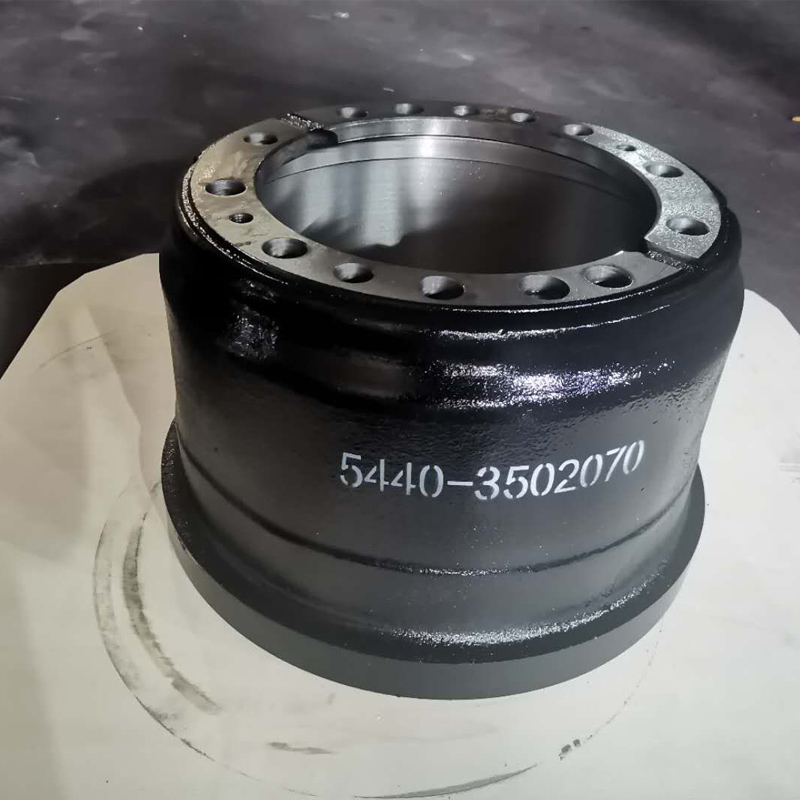Aug . 17, 2024 13:42 Back to list
Understanding Brake Drum Maintenance and Performance for Enhanced Vehicle Safety
Understanding Brake Drums A Crucial Component of Vehicle Safety
Brake drums are integral components of the braking system in many vehicles, particularly those with rear-wheel drive. They are vital for the safe and effective stopping of a car, truck, or any other vehicle. Understanding how brake drums work, their components, and the importance of maintenance can help vehicle owners ensure their safety on the road.
What is a Brake Drum?
A brake drum is a cylindrical component that houses the brake shoes and works in conjunction with the vehicle's braking system. When the driver applies the brakes, hydraulic pressure forces the brake shoes against the inner surface of the drum. Friction between the shoes and the drum slows down or stops the vehicle. This simple yet effective mechanism has been a staple in automotive design for decades.
Components of Brake Drums
1. Brake Drum The drum itself is typically made of cast iron or a composite material for durability and heat resistance. Its surface must be smooth and even to ensure optimal friction when the brake shoes press against it.
2. Brake Shoes These are curved pieces that press against the inside of the brake drum. They are lined with a friction material that wears down over time. When the brake shoes are worn, they need to be replaced to maintain effective braking.
3. Spring Mechanism Springs are used to hold the brake shoes in place and retract them when the brakes are not applied. This ensures that the shoes don’t drag against the drum while driving, which could lead to unnecessary wear and heat buildup.
brake drum maz

4. Wheel Cylinder Located at the back of the brake assembly, the wheel cylinder converts hydraulic pressure from the brake fluid into mechanical force that pushes the brake shoes outward against the drum.
Importance of Maintenance
Regular maintenance of brake drums is essential for safety. Over time, the constant friction generated can lead to wear and tear not only on the brake shoes but also on the drum itself. Signs that your brake drums may need attention include
- Squeaking or Grinding Noises These sounds often indicate that the brake shoes are worn down and may need replacing. Grinding can mean that the shoes have worn completely, and metal is contacting metal, which can damage the drum.
- Vibration or Shaking If you feel vibrating or shaking when you apply the brakes, it may be due to an uneven surface on the brake drum, which can lead to poor braking performance.
- Warning Lights Many modern vehicles come equipped with sensors that will illuminate a dashboard warning light if there’s an issue with the braking system.
Conclusion
Brake drums are a crucial element of vehicle safety, playing a significant role in the stopping power of a car. Understanding their function, components, and the importance of regular maintenance can help drivers ensure that their vehicles operate safely and efficiently. When brake issues arise, timely inspection and replacement of worn-out parts are vital to avoid potential accidents on the road. Ultimately, being proactive about brake drum care can lead to a longer lifespan for both the braking system and the vehicle itself, ensuring safer driving experiences for everyone.
-
Scania Brake Drums: OEM Quality for Optimal Safety & Durability
NewsAug.16,2025
-
R.V.I: Advanced Remote Visual Inspection for Precision
NewsAug.15,2025
-
Discover HYUNDA: Innovative Vehicles, Equipment & Solutions
NewsAug.14,2025
-
R.V.I: Unlock Advanced Insights & Real-time Performance
NewsAug.13,2025
-
Kamaz Brake Drum: Durable & Reliable for Heavy Duty Trucks
NewsAug.12,2025
-
Heavy Duty Iveco Brake Drum - Premium Quality & Safety
NewsAug.11,2025
